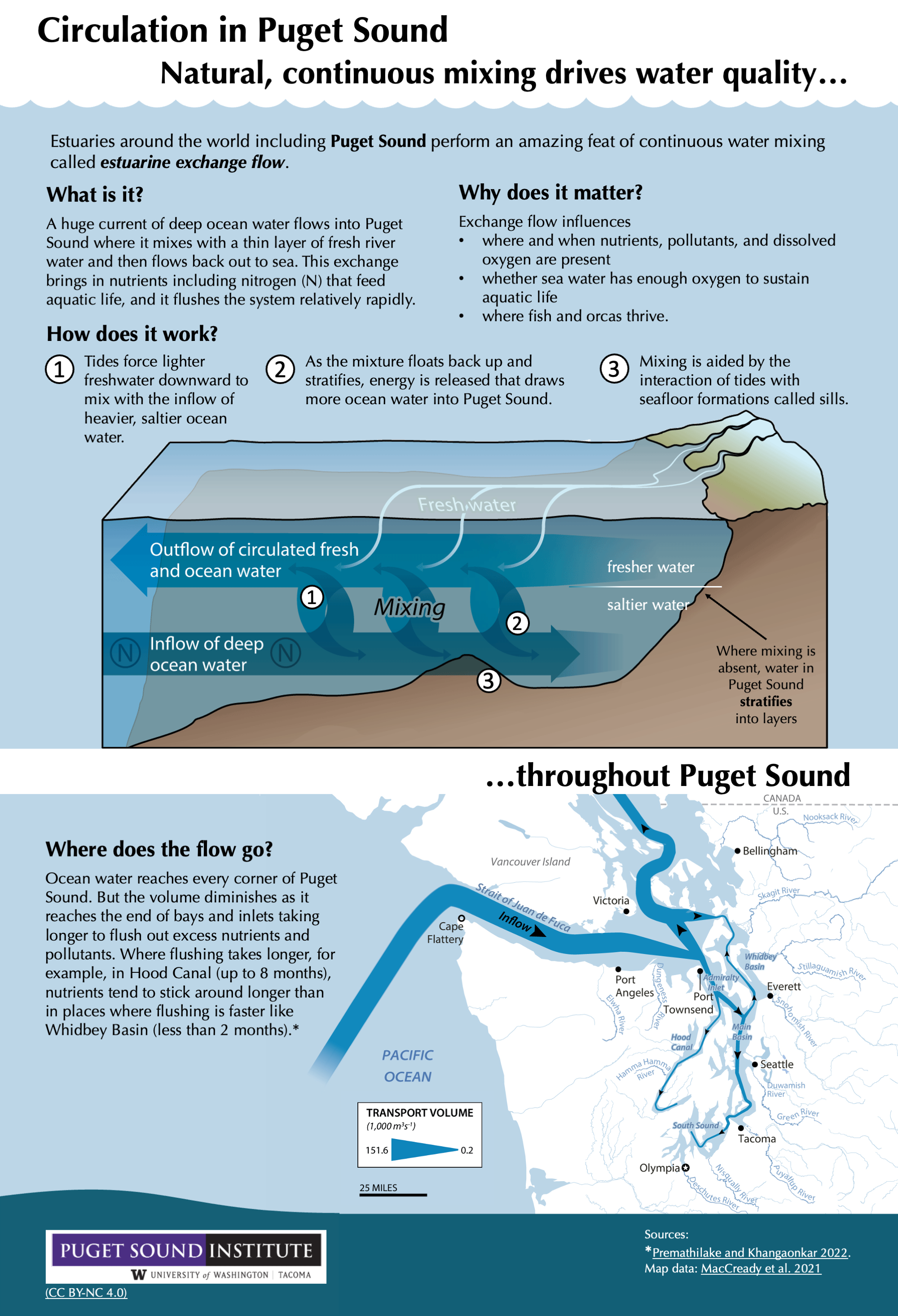Circulation in Puget Sound (infographic)
Estuaries around the world including Puget Sound perform an amazing feat of continuous water mixing called estuarine exchange flow.

Download the infographic (pdf)
Text alternative for web accessibility
Natural, continuous mixing drives water quality throughout Puget Sound
Estuaries around the world including Puget Sound perform an amazing feat of continuous water mixing called estuarine exchange flow.
What is it?
A huge current of deep ocean water flows into Puget Sound where it mixes with a thin layer of fresh river water and then flows back out to sea. This exchange brings in nutrients including nitrogen (N) that feed aquatic life, and it flushes the system relatively rapidly.
Why does it matter?
Exchange flow influences:
- where and when nutrients, pollutants, and dissolved oxygen are present
- whether sea water has enough oxygen to sustain aquatic life
- where fish and orcas thrive.
How does it work?
- Tides force lighter freshwater downward to mix with the inflow of heavier, saltier ocean water.
- As the mixture floats back up and stratifies, energy is released that draws more ocean water into Puget Sound.
- Mixing is aided by the interaction of tides with seafloor formations called sills. Where mixing is absent, water in Puget Sound stratifies into layers.
Where does the flow go?
Ocean water reaches every corner of Puget Sound. But the volume diminishes as it reaches the end of bays and inlets taking longer to flush out excess nutrients and pollutants. Where flushing takes longer, for example, in Hood Canal (up to 8 months), nutrients tend to stick around longer than in places where flushing is faster like Whidbey Basin (less than 2 months).*
Sources
*Premathilake and Khangaonkar 2022Map data: MacCready et al. 2021

